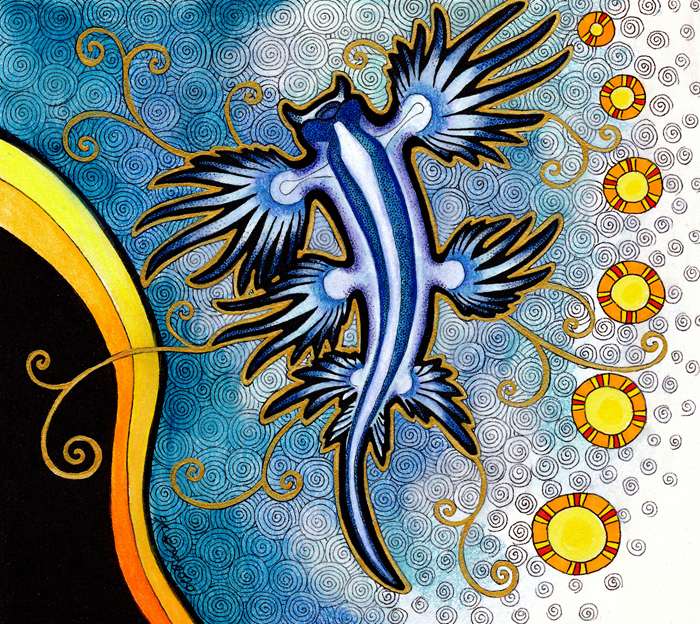Glaucus Atlanticus – Topsy Turvy
Keywords:
Air and water elements. Topsy turvy. At the mercy of the weather. Following the currents around you for good or ill. Wind wisdom. Water wisdom. Turning what others experience as pain into profit and nourishment. Protecting yourself. Stinging words. Nature’s mercy. Let go of the future. Spiral magic. Not everything is meant to be under your control. Letting go.
Description:
Glaucus atlanticus is a nudibranch, or sea slug, that goes by many common names, like the sea swallow, blue dragon and blue angel. It is found in the Atlantic, Pacific and Indian oceans. It’s a small, blue, gastropod mollusc without a shell. It grows to a maximum of three centimetres. It’s pelagic, living in the open sea in both temperate and tropical waters, travelling by floating upside down relying on the winds and ocean currents to move them. What humans normally see when looking at them, is actually their foot. They use a combination of air stored in a gas sac and surface tension to stay up. They use countershading, the blue side of their body faces upwards which looks like the blue of the water and helps reflect harmful UV sunlight, their silvery-grey body faces downwards, looking like the sunlight refracting through the ocean’s surface.
They hunt pelagic jellyfish (like blue bottles and the Portuguese man o’war) and siphonophores, eating them with a serrated radula, strongly preferring venomous species, as they are immune to their stinging cells. They then store those stinging cells (nematocysts) within their own tissues in the tips of their cerata, the feathery finger-like appendages on its body. As a result, G. atlanticus can sometimes develop and transmit a sting many times more concentrated than the animals it feeds from, but as their stinging capacity is dependent on what they eat, they can sometimes be safely handled without stinging at all.
They are hermaphrodites, with male and female reproductive organs, and produce spiral shaped egg strings after mating. They have been known to lay those eggs on the carcasses of their prey, and other objects. It is not uncommon for G. atlanticus to wash up on beaches, which is where they’re most commonly seen. Mass strandings are unusual, but not unheard of. Masses of G. atlanticus floating together are known as blue fleets. Not much is known about them otherwise, due to their lifestyle in the open ocean making them difficult to study outside of captivity.
Was this helpful?
0 / 0